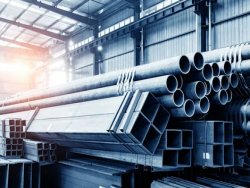According to Suarez, Colombia's steel industry is facing challenges on two main fronts. The first problem is pricing: the market is flooded with artificially low prices for imports from China, Russia and Turkey, countries whose steel producers benefit from large government subsidies that allow them to sell products below cost. These low prices reduce market benchmarks, making it difficult for Colombian producers to compete. The second problem is volume. The construction sector, which has traditionally been the strongest driver of steel demand, is shrinking, and after several years of 18 percent interest rates and high inflation, the number of construction project starts has dropped sharply. As a result, national steel consumption has weakened significantly.
Import price pressure is now the main threat
Depending on the product category, steel imports cover between five and 45 percent of Colombia's total demand. Ray Suarez emphasized that the biggest threat is the price, not the volume itself. Import prices have become a benchmark for domestic transactions, reducing the market level and depriving local factories of the opportunity to compete sustainably.
Call for trade protection measures
As market conditions deteriorated, companies began to adjust work shifts, reduce opening hours, and re-evaluate production lines. Currently, the plants are operating at only 62-64 percent of the installed capacity, which increases the risk of further job cuts and industrial recession.
Given the deepening price crisis, Ray Suarez noted that Colombian industry leaders are working with the government to implement trade protection measures. The aim is to counteract the distorting effect of subsidized steel imports from China, Russia and Turkey. "We expect these measures to be implemented soon because the price crisis is getting worse. If this continues, we will have to take tougher measures," he warned.






